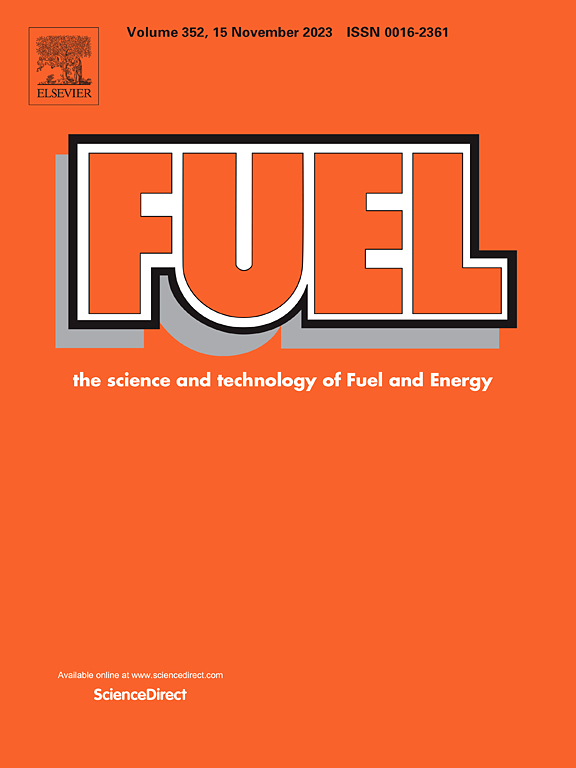提高质子交换膜燃料电池效率:楔形流道的最佳倾斜角和气流动力学
IF 7.5
1区 工程技术
Q2 ENERGY & FUELS
引用次数: 0
摘要
本研究建立了三维CFD模型,研究楔形流场板对PEMFC性能的影响。结果表明,通道倾角显著影响氧分布、水去除和热管理。在测试的配置中,12°和14°之间的倾角提供了最佳性能,优化了反应物供应,减少了水积聚,提高了功率输出。在14°时,与传统的平行流设计相比,燃料电池的电流密度提高了22.5%,证明了增强的传质和有效的排水能力。此外,这种配置最小化了温度梯度,确保了稳定的运行。虽然更陡的倾角(16°)会导致压力损失和反应物饥饿,但适度的倾角平衡了流动分布和可制造性,使其成为实际应用的理想选择。这些发现强调了优化流场几何形状以提高PEMFC效率的重要性。未来的工作应该探索实验验证、动态操作条件和先进的流场修改,以进一步提高性能和可扩展性。本文章由计算机程序翻译,如有差异,请以英文原文为准。
Enhancing proton exchange membrane fuel cell efficiency: Optimal tilt angles and airflow dynamics in wedge-shaped flow channels
This study developed a 3D CFD model to investigate the impact of wedge-shaped flow field plates on PEMFC performance. The results demonstrate that channel inclination significantly influences oxygen distribution, water removal, and thermal management. Among the tested configurations, tilt angles between 12° and 14° provided the best performance, optimizing reactant supply, reducing water accumulation, and enhancing power output.
At 14°, the fuel cell achieved a 22.5% improvement in current density compared to conventional parallel flow designs, demonstrating enhanced mass transfer and effective water drainage. Additionally, this configuration minimized temperature gradients, ensuring stable operation. While steeper angles (16°) introduced pressure losses and reactant starvation, moderate inclinations balanced flow distribution and manufacturability, making them ideal for practical applications.
These findings highlight the importance of optimizing flow field geometry to enhance PEMFC efficiency. Future work should explore experimental validation, dynamic operating conditions, and advanced flow field modifications to further improve performance and scalability.
求助全文
通过发布文献求助,成功后即可免费获取论文全文。
去求助
来源期刊

Fuel
工程技术-工程:化工
CiteScore
12.80
自引率
20.30%
发文量
3506
审稿时长
64 days
期刊介绍:
The exploration of energy sources remains a critical matter of study. For the past nine decades, fuel has consistently held the forefront in primary research efforts within the field of energy science. This area of investigation encompasses a wide range of subjects, with a particular emphasis on emerging concerns like environmental factors and pollution.
 求助内容:
求助内容: 应助结果提醒方式:
应助结果提醒方式:


